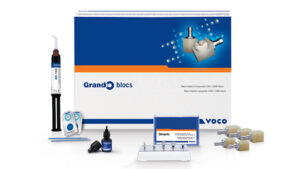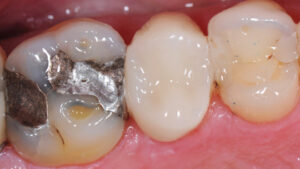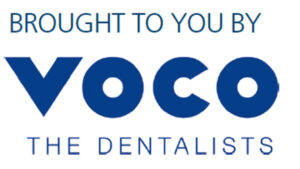KOL Forum: Grandio Blocs From VOCO
Nanoceramic Hybrid Block Offers Clinical Versatility and Excellent Performance.
Nanoceramic Hybrid Block Offers Clinical Versatility and Excellent Performance

In dentistry, there are many choices in materials for computer aided design/computer aided manufacturing (CAD/CAM) that offer varying degrees of predictability, longevity and esthetics. Grandio blocs from VOCO are an 86% filled nanoceramic hybrid CAD/CAM block with physical properties that are closer to natural tooth structure than traditional ceramics. This homogenous material is also easier to mill than conventional ceramic blocks, resulting in less wear on milling equipment, while allowing a highly cosmetic result — and without the need for firing or glazing.
The material’s tooth-like modulus of elasticity and ability to deform without breaking reduce forces at the adhesive cement bond, resulting in fewer debondings and excellent marginal integrity. Characterized by high flexural and compressive strength and enamel-like wear, Grandio blocs allow clinicians to create excellent bio-tolerant restorations. VOCO’s proprietary nanoceramic hybrid structure also allows milling without concern for chipping, an issue often seen with more brittle ceramic materials. Additionally, Grandio blocs can easily be repaired intraorally. The surface is readily polished and maintains its luster. Clinicians can choose between high and low translucencies, two block sizes (12 and 14L), and seven shades (A1, A2, A3, A3.5, B1, C2 and BL). For even greater efficiency, Grandio blocs are also available in a complete kit (Figure 1).

recurrent decay, failing restorations, biting pain
and occlusal wear.

The advantages of a milled hybrid material over direct composite placement are obvious. Many dentists face challenges with contact formation, shrinkage control and polymerization — particularly in large cavities. Milling negates many of these issues. When full-coverage indirect restorations are indicated, Grandio blocs offer toothlike natural wear, excellent esthetics and predictable outcomes. As seen in the case illustrated here, the patient presented with recurrent decay, failing restorations and occlusal wear (Figure 2). In cases of enamel wear, it is advantageous to place materials that are friendly to opposing tooth structure. A Grandio blocs HT size 12 was milled, air abraded, and coated with VOCO’s Ceramic Bond. After the tooth was isolated, VOCO’s Futurabond U was massaged onto the surface, air thinned, and the restoration cemented with VOCO’s Bifix QM. Once the excess was removed, the restoration was light-cured. Following occlusal adjustment, it was polished with rubber points (Figure 3), resulting in a highly esthetic restoration with excellent physical properties and performance.

vocoamerica.com
From Decisions in Dentistry. June 2018;4(6):44.


